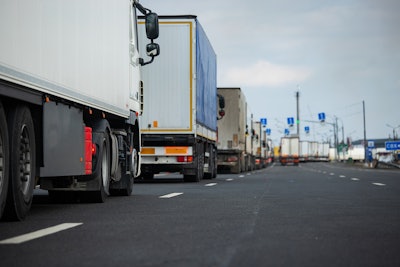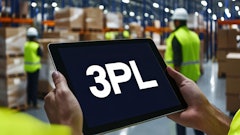
Cross-border trade has become a cornerstone of economic growth around the world. Still, navigating the complexities of international logistics can be a daunting task for companies of all sizes. Luckily, third-party logistics (3PL) providers are increasingly revolutionizing the process of services to streamline and optimize cross-border operations.
Case in point: Cross-border trade presents a myriad of challenges, from varying regulations and customs procedures to transportation and warehousing complexities. Tony Esparza, VP of strategic operations at Hercules, details why the high volume of goods being moved across the northern and southern border is not new.
 Olivier Le Moal/stock.adobe.com
Olivier Le Moal/stock.adobe.com
Limitations of cross-border logistics
While 3PLs have undoubtedly simplified cross-border operations, they are not without limitations. One of the primary challenges is the fragmented nature of international trade regulations and customs procedures. Navigating these complexities requires a solid infrastructure.
"Within this already complicated ecosystem of regulations, different border crossings require different customs procedures. As a result, shippers must know the different requirements and procedures for northbound versus southbound freight, as well as for individual origin terminals. Shippers should not assume the requirements and procedures for transporting goods from the U.S. into Canada are the same as going from Canada to the U.S.; otherwise, they risk having shipments held up at the border," says Esparza.
Additionally, these movements often entail longer transit times and higher costs compared to domestic operations—a specific obstacle for perishables. Jose Minarro, managing director for Sunset Transportation's Mexico operations, explains transporting perishables over international borders introduces distinct challenges, necessitating tailored strategies to guarantee that these goods reach their destination in prime condition.
 Viktoryia/stock.adobe.com
Viktoryia/stock.adobe.com
A perishables' shelf life is an emphasis on the need for prompt and timely transport. Delays risk the expiration of products before delivery to consumers, which Minarro says leads to financial losses and unnecessary waste, therefore strategic logistics planning and expediting customs clearances are crucial for minimizing travel times.
Leveraging technology for continued solutions
Technology has emerged as a game-changer for 3PLs, offering innovative solutions to overcome traditional limitations. Utilizing transportation software and compliance solutions, Esparza describes, expedites the cross-border shipping process by automating documentation creation and submission while also reducing manual process time and errors.
"By automating the process, you avoid needing to compile documents from multiple sources. It also ensures all necessary documents, containing complete and accurate information, are available to all stakeholders, when and where they need them. Advanced logistics software and digital platforms enable real-time tracking and visibility across the supply chain, allowing businesses to monitor their shipments at every stage of the journey," says Esparza.
Technologies such as artificial intelligence (AI) and machine learning (ML) algorithms also hold immense potential for enhancing transparency and security. Minarro says freight technology innovations, including the use of AI and advanced analytics to gain a competitive edge, are helping with optimizing routes, improving delivery times and enhancing overall efficiency in freight operations.
"Specific focus is on the adoption of digital solutions within the cross-border freight market. Key areas of investment include platforms for better tracking and management of shipments, as well as tools for simplifying customs clearance and border crossing procedures. This emphasis on digitalization is aimed at making the cross-border transportation of goods faster, more reliable, and more transparent for many reasons, including freight fraud prevention," Minarro explains.
An outlook for the future of operations
For successful cross-border shipping of perishables specifically, Minarro describes the crucial feature of mastering several key practices.
 siwakorn1933.stock.adobe.com
siwakorn1933.stock.adobe.com
"Performing thorough quality checks at various stages—before departure, during transit and upon arrival—is vital to ensuring that perishables meet the required standards from the point of origin to the destination," Minarro continues. "Additionally, staying informed about the current economic conditions, trade policies, and international relations is essential to navigating potential challenges in cross-border shipments. Finally, accurate and complete shipping labels are critical for complying with international shipping restrictions and facilitating a smooth transportation process for perishable goods."
Looking ahead, the cross-border logistics sector is poised for continued innovation and growth. As global trade volumes continue to rise, the demand for efficient and reliable logistics solutions will only intensify. Effective cross-border transportation without delays relies on collaboration and coordination among importers, exporters, transportation providers, customs and border authorities, and other stakeholders, says Esparza. And while a challenging process no doubt, especially when cold monitoring is involved, there are steps shippers can take to set themselves up for success. With best practices in management and the implementation of technology, 3PLs can navigate cross-border shipping and expand their global reach into 2025.



















